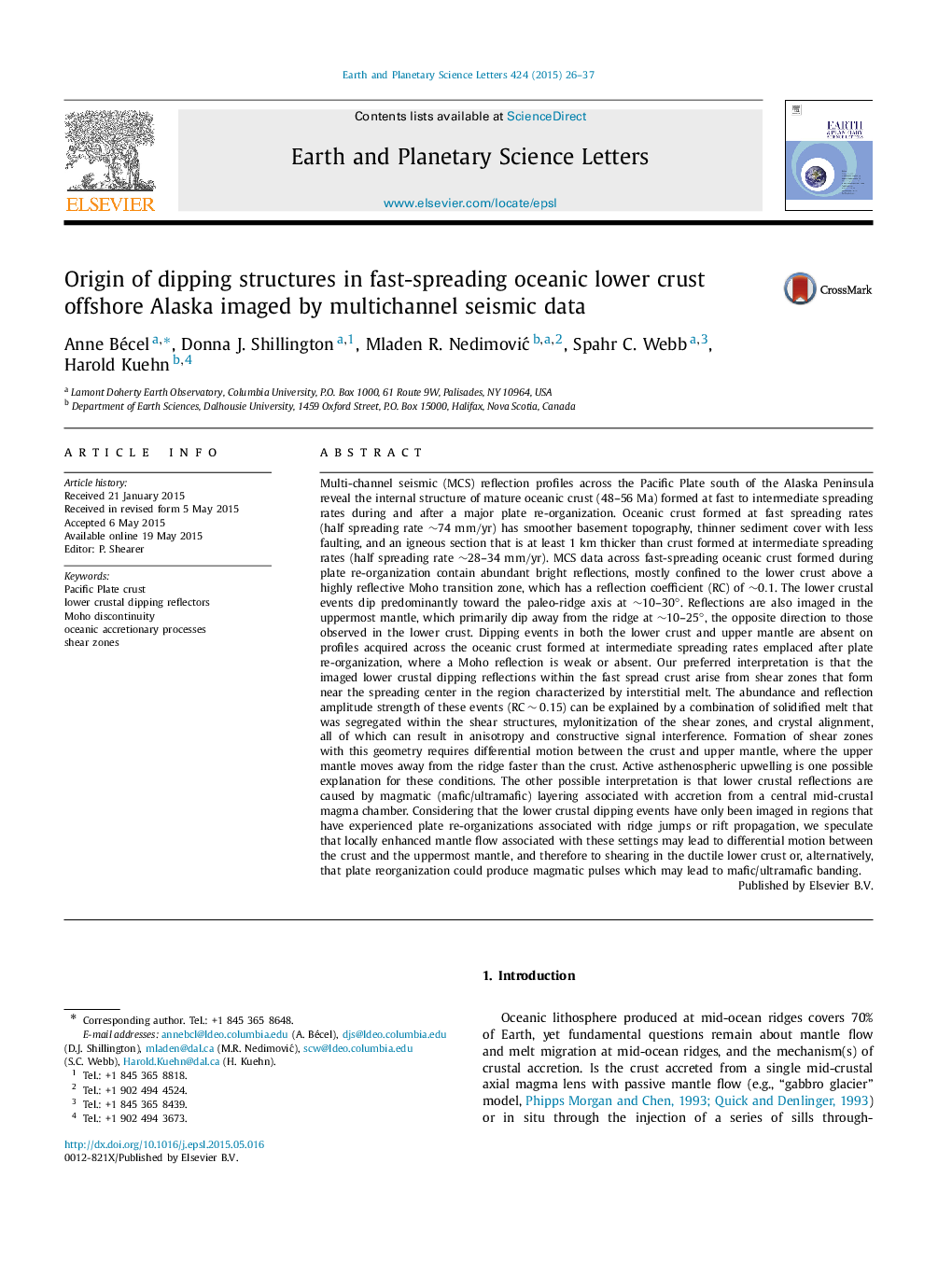| کد مقاله | کد نشریه | سال انتشار | مقاله انگلیسی | نسخه تمام متن |
|---|---|---|---|---|
| 6428213 | 1634732 | 2015 | 12 صفحه PDF | دانلود رایگان |
- MCS data yields new insight into the origin of lower crustal dipping reflectors.
- Dipping events are interpreted as either shear zones or as magmatic layering.
- Formation of dipping events is not controlled by spreading rate alone.
- Episodes of plate reorganization could promote the formation of the dipping events.
Multi-channel seismic (MCS) reflection profiles across the Pacific Plate south of the Alaska Peninsula reveal the internal structure of mature oceanic crust (48-56 Ma) formed at fast to intermediate spreading rates during and after a major plate re-organization. Oceanic crust formed at fast spreading rates (half spreading rate â¼74 mm/yr) has smoother basement topography, thinner sediment cover with less faulting, and an igneous section that is at least 1 km thicker than crust formed at intermediate spreading rates (half spreading rate â¼28-34 mm/yr). MCS data across fast-spreading oceanic crust formed during plate re-organization contain abundant bright reflections, mostly confined to the lower crust above a highly reflective Moho transition zone, which has a reflection coefficient (RC) of â¼0.1. The lower crustal events dip predominantly toward the paleo-ridge axis at â¼10-30°. Reflections are also imaged in the uppermost mantle, which primarily dip away from the ridge at â¼10-25°, the opposite direction to those observed in the lower crust. Dipping events in both the lower crust and upper mantle are absent on profiles acquired across the oceanic crust formed at intermediate spreading rates emplaced after plate re-organization, where a Moho reflection is weak or absent. Our preferred interpretation is that the imaged lower crustal dipping reflections within the fast spread crust arise from shear zones that form near the spreading center in the region characterized by interstitial melt. The abundance and reflection amplitude strength of these events (RCâ¼0.15) can be explained by a combination of solidified melt that was segregated within the shear structures, mylonitization of the shear zones, and crystal alignment, all of which can result in anisotropy and constructive signal interference. Formation of shear zones with this geometry requires differential motion between the crust and upper mantle, where the upper mantle moves away from the ridge faster than the crust. Active asthenospheric upwelling is one possible explanation for these conditions. The other possible interpretation is that lower crustal reflections are caused by magmatic (mafic/ultramafic) layering associated with accretion from a central mid-crustal magma chamber. Considering that the lower crustal dipping events have only been imaged in regions that have experienced plate re-organizations associated with ridge jumps or rift propagation, we speculate that locally enhanced mantle flow associated with these settings may lead to differential motion between the crust and the uppermost mantle, and therefore to shearing in the ductile lower crust or, alternatively, that plate reorganization could produce magmatic pulses which may lead to mafic/ultramafic banding.
Journal: Earth and Planetary Science Letters - Volume 424, 15 August 2015, Pages 26-37
